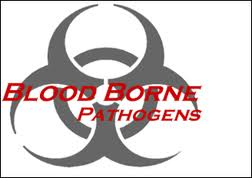The collected body material is spread out on culture plates that contain a specific nutrient medium. These plates are then stored for a few days sometimes even a few weeks under the right conditions, such as temperature and moisture content. The pathogens, bacteria, viruses, fungi or parasites can then multiply so that it is better to investigate which pathogen we are dealing with. This can be examined with the help of a microscope or with other additional tests. The bloodborne pathogens certificate happens to be quite important in this case.

The Modern Approach
A modern approach is to determine a mass spectrum of the proteins of the bacteria in question, of which the pattern immediately indicates which species it is: that is very fast. The execution of the culture can nowadays be done automatically by a robot whereby the plates are photographed at the end of the culture and the results can be processed on the computer.
If, after an investigation, it has become known exactly which pathogen is involved, it can be determined how the patient should be treated. Because pathogens nowadays often become resistant insensitive to treatment with certain agents, further research at the laboratory determines which drug antibiotic the pathogen in question is most sensitive to. Culture is mainly used for infections with bacteria.
Serology
If a patient has an infection and therefore an unknown pathogen bacterium, viruses, fungi or parasites is present in the patient’s body, the patient makes antibodies against this pathogen immune or immune system. Those antibodies are in the blood. With the help of serological research, one examines which antibodies are in the blood, the serum: blood without the blood cells of a patient and in which concentration the titer.
This way we find out which pathogen is involved. This is important to be able to offer the patient the right treatment. Nowadays this research is automated so that many different types of pathogens can be searched in a single tube of blood. Serological testing is mainly used for infections with viruses.
Molecular Diagnostics
Pathogens also have genetic material DNA or RNA. Bacteria and parasites have a DNA genome, while viruses have either DNA or RNA as hereditary material. Because this genetic material is very specific, it can be detected quickly and sensitively and identified with certain techniques, such as PCR polymerase chain reaction. The detection of pathogens through the detection of the genetic material is called Molecular Diagnostics. With specific equipment, it can be monitored whether a pathogen is found in body material and also how much of it is present.
Conclusion
This is useful information to determine the cause of an infection. A limitation of Molecular Diagnostics is that only those causative agents are demonstrated that are suspected in advance of being the cause of this pathogen for example due to the symptoms with which the patient visits the doctor. Because the Molecular Diagnostics uses very sensitive techniques, sometimes small amounts of a pathogen can already be found that do not have to be the direct cause of the disease. This must be taken into account when assessing the result.






